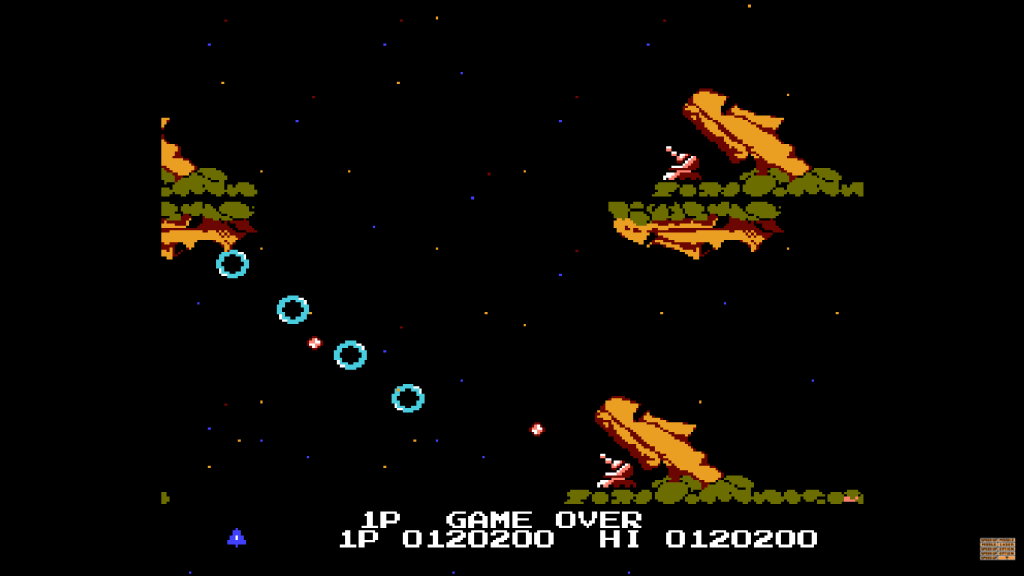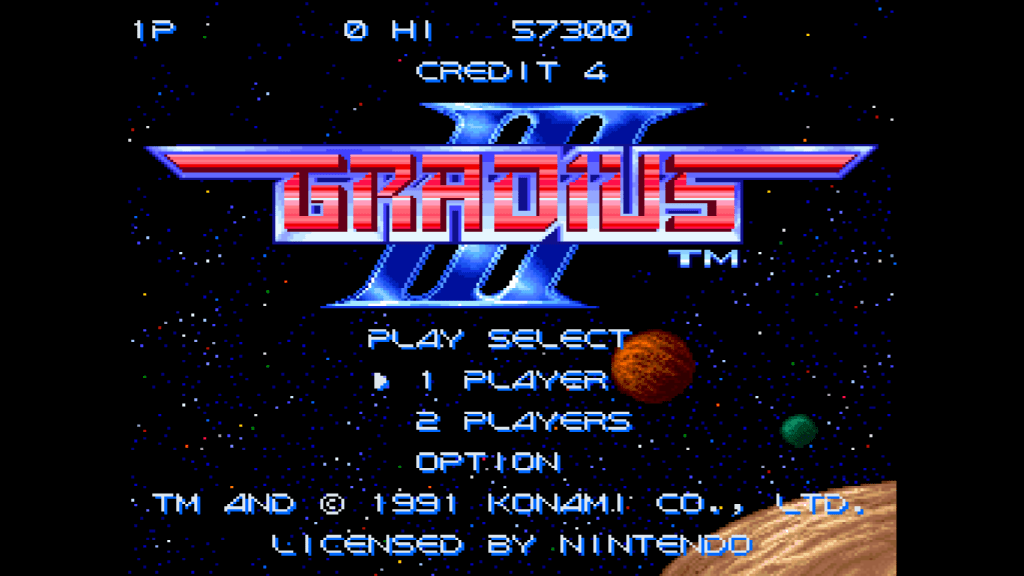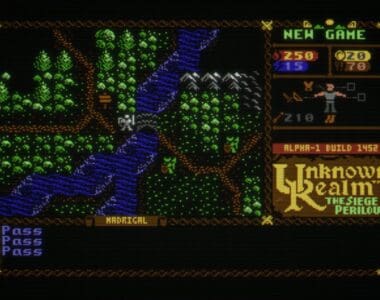


Shoot ’em ups, often referred to as “shmups,” defined the arcade scene with their fast-paced and challenging gameplay. Among the pioneers of this genre, Space Invaders played a crucial role in the rise of arcade culture, paving the way for numerous games featuring spaceships battling enemies over the decades. In 1985, Konami introduced Gradius, a horizontal shmup that not only increased the difficulty level but also offered players unprecedented choices thanks to its innovative power-up system. Now, four decades later, Gradius stands as a landmark title in the shooter genre, a fitting tribute to its legacy. As we celebrate 40 years of thrilling sci-fi action with Gradius, let’s revisit its impactful story and enduring gameplay.
Vic Viper’s First Adventure
By 1985, Konami had already spent nearly a decade in the arcade business, having launched their first title, the unremarkable Block Yard, in 1977. Originally conceived as a sequel to their 1981 sci-fi game Scramble, Gradius transformed into a groundbreaking project influenced by Western sci-fi classics like Star Wars. Modeled after Namco’s Xevious, it was designed to deliver a more impactful and exhilarating experience. After a year of development, Gradius debuted in arcades worldwide (under the title Nebula outside Japan) and quickly won over players.
Players control Vic Viper, a sleek spacecraft with the ability to navigate through different dimensions. While the Vic Viper starts off relatively weak, strategic use of power-ups can turn it into a formidable force in the cosmos. An upgrade bar at the bottom of the screen allows players to select their ship’s enhancements by collecting power-up capsules throughout gameplay.
Basic upgrades, such as enhanced speed and missiles, are easily attainable, but for more powerful enhancements, players must gradually accumulate power-ups. This creates a dynamic risk-reward balance; while saving power-ups for the best upgrades is tempting, some are essential for survival. Timing and resource management amidst enemy fire offer an engaging gameplay experience that rewards both skill and knowledge, making each attempt feel rewarding.
Players eagerly fed coins into Gradius machines, leading to notable success. The game became a summer hit in Japan in 1985 and gained traction in the U.S. and Europe in 1986. Konami wisely released a port for the Famicom/Nintendo Entertainment System, which sold over one million copies in Japan alone. This home version also introduced the legendary “Konami Code” (Up, Up, Down, Down, Left, Right, Left, Right, B, A, Start), granting 30 lives instead of the usual three. With accomplishments across both arcade and home platforms, Konami recognized they had a success on their hands, leading to a stream of sequels.
The Expanding World of Gradius
The first spin-off from the Gradius universe debuted in 1986 with Salamander (later retitled Life Force), featuring two-player co-op play, horizontal and vertical stages, and a more accessible power-up system. Following several ports and adaptations, the legitimate sequel arrived in 1988, titled Gradius II (known as Vulcan Venture outside Japan). While Gradius II incorporated improvements and elements from Salamander, the series truly flourished with Gradius III, released in 1989. This installment boasted new weapons, a unique feature allowing players to customize power-ups, and became a hit upon its home release in 1990 on the Super Nintendo.
Although Gradius enjoyed a successful run in the 1980s, Konami largely set it aside during the 1990s, aside from some spin-offs like Salamander 2 in 1996. The arrival of Gradius IV didn’t occur until 1999, when the arcade boom had faded. While these titles received critical acclaim, sequels like Gradius V struggled in the era of PlayStation 2. Aside from the limited 2008 WiiWare release, Gradius ReBirth, Konami let the franchise fade away quietly. With titles like Call of Duty dominating the market and the rise of online gaming, Gradius faced tough financial prospects. In 2011, Konami’s decision to employ the Gradius brand for a slot machine signified a disappointing end for what was once a remarkable arcade classic.
A Lasting Legacy
Fortunately, the tale of Gradius didn’t conclude on such a sour note. Despite being relegated to gambling devices, the franchise remained cherished among arcade enthusiasts. As a shmup, Gradius delivered the essential elements: challenge, action, strategy, and excitement amid the chaos. The game’s legacy endures, and even 40 years later, players can’t resist a quick round when they spot a Gradius cabinet. Moreover, the upcoming Gradius Origins collection ensures the series remains alive and well.
For the first time in over a decade, a new Gradius game will be released on all major platforms, featuring the seven principal installments along with the previously unreleased Salamander III. While it may not generate massive profits, it’s sure to provide a nostalgic journey. If you’ve never experienced Gradius, consider this your invitation. Whether you choose to explore the classic NES and SNES ports, visit an arcade to try the original, or grab the new Gradius Origins collection, Vic Viper’s adventure is one worthy of your time.
Related
Original article by www.oldschoolgamermagazine.com



